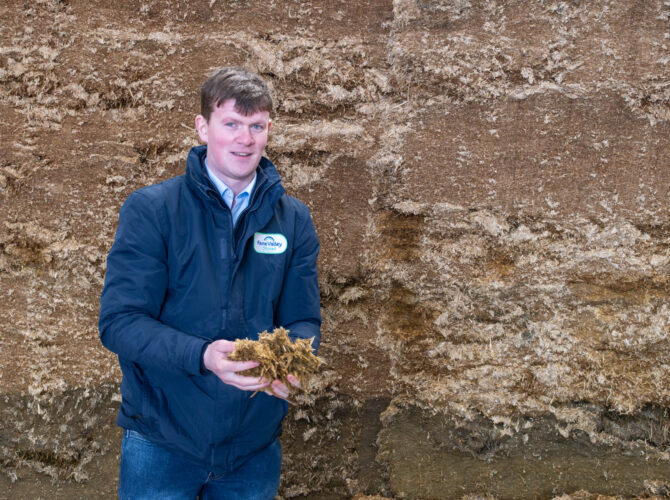Wholecrop a Solution in a Challenging Spring
12th April 2024

It has been a challenging spring for everyone, with the wet weather making it difficult to complete field work and get animals out to grass. This has led to increased volumes of slurry and depleted silage stocks. Cereal wholecrop could be considered allowing a later drilling date than cereals for combining and providing good yields of forage whilst utilising farmyard manures and slurries.
As a forage, wholecrop is an excellent all-round feed for livestock, providing a unique balance of energy, protein (from the grain), and digestible fibre (from the straw) as a silage. Wholecrop is very flexible and provides a valuable alternative and additional source of home-grown forage to complement grass silage, helping to reduce reliance on purchased feed. Whole-crop silage is very rumen friendly, due to the nature of the fibre and how it is digested within the rumen, helping to balance ‘fast energy’ from high D value grass silage and concentrate feeding. Wholecrop will provide a cost-effective, forage of consistent quality and palatability, with yields in the region of 10-14T per acre. At harvest dry matter should be in the range of 28-40%, protein between 9-15% and starch ranging from 15-30%, depending on the crop mixture and stage at harvest. With the reduced planting of winter cereals and later drilling of spring cereals straw could be scarce this year and wholecrop as a source of quality fibre becomes even more valuable.
Wholecrop cereals have a large demand for potassium or potash which lends itself to utilising organic manures. For a crop of spring wheat with a potassium index 2- it would require 152 units of potash. This could be supplied by 9t/acre of farmyard manure, 7,000g/acre of cattle slurry applied in split application, or a combination of cattle slurry and farmyard manure could be used. As for nitrogen the crop would require 120 units in total but again with cattle slurry able to provide about 9 units of nitrogen per 1,000g if incorporated into the soil.
Growing a wholecrop spring cereal could be a good option to correct any fields which may have been damaged due to the difficult conditions last autumn and this spring. Allowing cultivations to remove soil compaction and improve drainage whilst the earlier harvest compared with a combinable crop allowing for a timely autumn reseed or the crop itself could be under sown.
To find out more information about growing spring cereals for wholecrop please contact your local Fane Valley agronomist or call 028 9261 0485.

